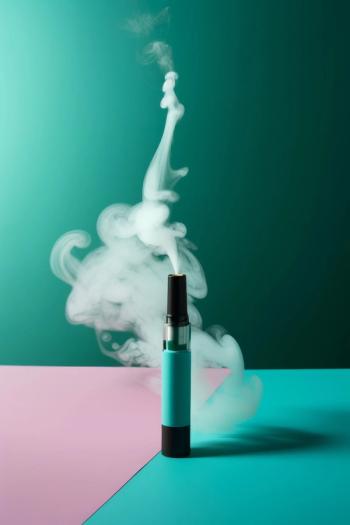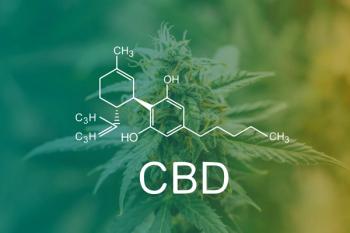
Cannabis Science and Technology
- March 2022
- Volume 5
- Issue 2
- Pages: 16-19
More Innovative Cannabis Products Emerge Amidst Ongoing Processor Issues

The new processed cannabis products continue to attract consumers—but black market influence causes hesitancy.
The cannabis industry continues finding new ways for consumers to enjoy an extracted, processed cannabis product, whether for medical or recreational purposes. New ideas from such mainstream sources as agriculture tech for growing and processing, and new technology enabling functional food concepts for consumption, have been adopted to the general acceptance of growers and consumers alike. This part of the industry has been experiencing huge growth over the last five years. Powder and Bulk Solids (PBS), an industry publication, estimates that there were 11,097 licensed or permitted cannabis manufacturing firms in the US as of May 2021. Found in that group, an estimated 6253 are cannabis manufacturing firms, and 4844 are hemp manufacturing firms. PBS’ 2021 estimate indicates the number of cannabis manufacturing firms has grown by about 212% over the last five years (1). However, there is a dark cloud over processed cannabis product development, in large part because of e-cigarettes and related vape products being pushed out by the black market. These products are generally made with dangerous chemicals. That has put the cannabis industry on notice with regulators who have to decipher the product offerings: What is a good, safe cannabis vape; what is not; and who ultimately decides—the consumer or the regulator?
This installment of the “Tech Innovations” column discusses ongoing problems with black market vape products and what that means to legitimate cannabis processors. In this article, you will also gain insight into cannabis processing innovations that had their roots in other industries, such as candy manufacturing; plus, a look at new ideas in recycling cannabis waste materials as the industry leans into sustainable production techniques to limit the carbon footprint of their operations.
Obstacle: The Vaping Crisis
The vaping crisis that peaked in September 2019, according to the Centers for Disease Control and Prevention (CDC) (2), continues to drive consumer confusion over what is a good cannabis concentrate or oil, and what is not. Industry regulators and cannabis industry activists continue to work on changing the scenario for the better. Their efforts appear to be paying off.
The 2019 CDC report cited tetrahydrocannabinol (THC)-containing e-cigarettes and vape pens from “informal sources like friends, family, or in-person or online dealers (i.e., black market),” as being linked to most lung injury cases, and that those sources played a major role in the outbreak (2).
Most research suggested vitamin E acetate, used as a cheap additive to effectively water down the THC or nicotine in vape products and drive profits, was the real culprit.
In any case, the cannabis industry felt the effects. “We definitely felt the vaping crisis,” said Mark Unterbach, CEO of Procan Labs, a family-owned, state-of-the-art cannabis processing and manufacturing facility in Concord, California and one of the first large scale ethanol extraction companies in the state (3).
In December 2019, Unterbach challenged California regulators who had prohibited the sale of all vape products without understanding the role the black market played in creating and selling tainted cannabis vape products (4).
When the vaping crisis hit, Procan saw a drop-off in terms of the quantity of oil that their clients were buying. “The industry has expanded in some areas, and consolidated. Because we’re such a niche, and because our product is such a commodity right now, and because we don’t do white label, we don’t put product into the market,” he said. “We make oil, and we sell that oil to the manufacturers.”
Time and market share, he said, have done more to diminish the vaping crisis than anything. “Our business in terms of volume is up significantly, and our top clients are also buying more oil and putting more vape cartridges out there.”
Unterbach said that the price of cannabis oil back in 2016 and 2017 was so high that unscrupulous sellers were compelled to find ways to make it more profitable. “Back then, I think people were using some garbage that might have been harmful. But now that we’re a few years into it, I don’t think a lot of that product exists. I think it’s all washed out of the market,” he said. “You can still buy black market cartridges out there for $10. I don’t know what’s in it, but I would like to think that because oil has come down in price so much that that $10 now has a much larger margin than it did before when you had to put junk into it.”
California, for example, is strict in terms of what is in the product when it gets to the consumer. For instance, California currently requires testing for 66 pesticides in all legal cannabis products (5). “We don’t have to test our oil going out. It gets tested on the front end and it gets tested by the final product manufacturer,” Unterbach said. “It’s on the front end to protect us to make sure that we don’t buy anything that’s got pesticides in it. And then on the back end, it’s a bit of a marketing thing to make sure that people know Procan’s always got good oil as opposed to saying, you test it, it’s not our problem.”
It’s the ongoing black market vape product sales that continue to drive the fear and hesitation about vaping products. But more stringent regulatory actions are slowly changing that paradigm. “We are so heavily tested at every level that the odds of the legal market being a part of that problem is very, very slim,” Unterbach said.
With all the regulations catching up on the cannabis vaping issue since 2019 to mandate what is in it, the industry has mostly been given a green light to continue making a product that surveys indicate have become consumer favorites. Cannabis vape sales rose in 2020, but quickly declined once the pandemic hit, as consumers once again became concerned about lung health, according to one report (6).
Innovation: Cannabis as Functional Food
Keith Woelfel, research and development director for Denver-based Ripple Brands, came to Colorado in 2016 after 20 years as a senior food scientist with Mars Wrigley, Inc. Ripple Brands are the makers of cannabis-infused Ripple Dissolvables and Ripple Quick Gummies, with offices and manufacturing sites throughout Colorado and Michigan.
Woelfel is a guy with multiple mouth-watering confectionary product patents (one example: “a fat-based confection possessing a smooth and creamy mouth-feel and a thermally generated flavor and suitable for use in candy-shelling” [7]) who added another patent for unique cannabis products at Ripple Brands: powdered cannabis, called Ripple Dissolvables (8), along with a full line of gummy products including recently launched sleep-assistive gummies.
Woelfel mentioned that he started the company to answer the question: How do you deliver cannabis as a functional food? “I was very impressed with the founder’s innovative mindset, approaching cannabis as a functional food. If you’re using a functional food for relaxation, the world’s most popular is tea, which became the founding product of the company,” Woelfel said. “But you can’t just put cannabis in tea. It’s not mixable. So that became a driving problem for us to solve: How do you create cannabis with tea in a format that consumers can use and get a benefit from, while making it stable and commercially scalable? To do that, you must make it water-soluble, because cannabis isn’t water-soluble.”
The process began by taking cannabinoids, which are oil based, and converting it into a water-based format: The oil-based THC was converted to a stable water-based emulsion, and dried into a solid sheet. It was then broken into granules and mixed with tea. In the process of breaking the powder into granules, a fine powder residue of the sheet was also created in significant amounts. Then he had his “a-hah” moment. “The water-soluble fine powder became its own separate thing,” he said. “So that was the genesis of Ripple.”
Ripple uses a two-step process to create its water-soluble THC powder. First, a THC oil in water emulsion is created, forming many tiny fat droplets. The tiny THC and fat droplets are then coated with a food-grade emulsifier and dispersed into water. Second, a proprietary process is used to dry the emulsion into a flowable powder that is cold water-soluble. The process creates a surface morphology that has a high degree of surface area (for example, similar to a bunch of grape versus a smooth balloon surface), which helps drive water solubility. The powder rapidly dissolves without “floaties,” oil slicks, or sedimentation.
Woelfel discovered that the Ripple powder could be added to just about anything such as coffee, water, sports beverages, or even as a topping on pizza. “The other part of it from a business perspective is that it can be leveraged in both its powder format and liquid format as well,” he said.
Since it’s a powder, dry mixes can be made with it. “For example, you could make a protein shake that had cannabis in there in the powder format. You can turn the same powder and put it into capsule formats or tablet format.”
Woelfel said that he looks at cannabis health benefits that are possible through a wide range of different cannabinoids. “The technology we have means we can work with THC, cannabidiol (CBD), cannabigerol (CBG), cannabinol (CBN), or tetrahydrocannabivarin (THCV). So, a whole host of cannabinoids would be one of the main platforms that will continue to work in Ripple.”
Working for Mars was invaluable to his work in cannabis, he explained. “My work for Mars was extremely helpful to understand product development on many facets. From formulation, scaling up to process, quality control, and quality assurance—all those were very valuable,” he commented.
One process that led him to create powdered cannabis was working with cocoa flavanols as bioactive compounds with potential benefits in the prevention of chronic diseases associated with inflammation and promoting healthy blood flow (9).
Similar to cannabis, there were some bitterness and solubility challenges. “I’ve seen things such as when we take cocoa powder, in its native form, just floats to the top of milk or water. So, there’s a series of technologies that you can use to really drive the water solubility,” he explained.
It was the diverse formulations and scale up experiences within these formats and others that led to the technically creative strategies to make Ripple.
With cannabinoids, there will be more sophisticated products to come. “I can see over the next couple of years, starting now, a trend where the product designs and delivery systems become much more sophisticated,” Woelfel said. “There’s a lot more clinical research to validate how well these products are providing an array of consumer benefits.”
Caliper Foods has conducted four separate clinical research studies to understand how to make Ripple, both from a formulation and process standpoint, to how well it’s being absorbed.
“It’s not predictive,” Woelfel said. “You actually have to do the work to make the product, test it in humans, and then measure the blood levels of cannabinoids to establish the pharmacokinetics. If the human body is not absorbing the cannabinoids, you’re not getting the benefit. By doing clinical research and doing the design work, you can create products that have very predictable onset time to consumers and a very predictable experience.”
There’s no end in sight for innovation to continue in the functional food space, he said, whether it be a powder format or a liquid format. “Because if you want cannabis for health and wellness, you don’t want an inhalable. You want an edible. If you want an edible, you want to make sure it tastes good, it’s versatile and dependable. You also want to be able to trust it to provide the benefits you expect.”
Progress: Sustainability
Bokashi Cycle (10), makers of a waste pulverizer machine coupled with a fermenting system, is involved in taking any type of green waste—food waste, dairy manure, yard waste, or anything that comes from a plant, including cannabis—ferment the material and convert it to a bioactive product in about two weeks.
That bioactive product, which is kind of a mush, can then be separated into what is called a cake, and reused in the grow operation. “The big advantage of this process is that not only is it easy and fast, but it does something that’s very unusual and very different from any other kind of recycling,” said Larry Green, a research scientist and founder of Bokashi Cycle. “It creates bioactive end products and microflora that are highly beneficial to the soil. So, you can take out that waste that you produce, and you can feed it back into your soil, without the need to use any fertilizers.”
The fermentation process, in addition to expanding the number and diversity of micro flora going back into the soil, is also producing bioactive materials called cytokinins, Green explained. Cytokinins are a class of plant-specific hormones that play a central role during the cell cycle, promoting cell division in plant roots and shoots (11). “If you’re a cannabis grower, and you’re spending a lot of money on nutrients, you can reduce your costs almost immediately the minute you start recycling your green waste that you’re producing and putting back into your grow,” he said.
The other benefit of the fermenting process is that it kills all the pathogens, so a processor doesn’t get coliform bacteria or other pathogens. “In fact, as we start fermenting, anything that was in (that waste) that was contaminating it is destroyed because of the enzymatic activity.”
Green said that his company has green waste recycling machines in use now, mostly in Canada, California, Colorado, and some East Coast grow and processing operations. “But the reality is we didn’t start into this process because we were interested in cannabis,” he said. “We got involved because the cannabis situation presented a very unusual opportunity. There was clearly a high demand for a waste recycling solution,” he said.
The other reason why the company got involved in the cannabis space was because grow and process operators have the problem of what to do with their waste, generally requiring loading up tons of it, and transporting it to another facility for waste management, while still maintaining chain of custody requirements.
All those expenses of the required tracking of the product can be a real hassle. “One of the advantages of using one of our machines is that it takes very little space, and you can do it right on site,” Green said. “It can be done indoors. It’s electric, relatively quiet, and works on a single-phase 240 volt system.”
Cannabis is very tough material, especially the root balls and the stems that need to be pulverized and granulated. “Most recycling machines can’t tolerate that and break down quickly,” he mentioned.
The Bokashi Cycle system is designed using Hardox 450, an abrasion resistant steel (12), as the metal for the cutting media, with seven blades running through eight gates at about 1000 revolutions per minute.
Growers were amazed at the outcome of recycling their grow waste back into the soil. According to Green, some growers claimed that, when they did the THC and CBD measurements from grows using recycled waste, they were 30% above what they were able to get on an indoor controlled environment. “I’ve had other people report similar results,” he said.
His machines can currently process 1-2 tons of green waste an hour, but he is working on a system that can handle 50 tons a day. He figures someone could go into business for themselves, recycling the cannabis waste and then selling it to growers. “Once it’s been fermented, it’s no longer active with any cannabis material in it that is going to get you into trouble. You can sell it to anyone.”
He is seeing a sort of transition now where food waste is presenting the same environmental issues as the cannabis waste industry. “With the food waste industry, you can actually process it with our system, and take the cannabis waste and process it together with the processed food waste that has gone through the fermentation cycle.”
Conclusion
New ideas in the cultivation and processing of cannabis are being both shared with and driven by mainstream agricultural technologists. All are working to get the most energy efficient production possible given the limitations and the demands of this complicated plant, especially in where and how it is grown. Cultivating cannabis presents unique opportunities for those working in that part of the cannabis business in that they must strive harder to reduce the carbon footprint of their operations more than many other agricultural operations. But cannabis is also a plant under strict regulations that create obstacles in planning and carrying out cultivation and processing, which makes it a completely different agricultural product from seed to sale. It's these opportunities, and these obstacles, that open up methods to explore, or solutions to try, in cannabis cultivation. The motivation to succeed is strong—cannabis is still one of the biggest cash crops in the world, with great potential for a bigger future.
References
https://www.powderbulksolids.com/sites/powderbulksolids.com/files/PBS-PD-CannabisManufacturingFirmsReport2021.pdf .https://www.cdc.gov/tobacco/basic_information/e-cigarettes/severe-lung-disease.html .https://procanlabs.com/about-us/ .https://www.prnewswire.com/news-releases/procan-labs-founder-sounds-off-on-new-california-vaping-laws-300967732.html .https://pubs.acs.org/doi/10.1021/acs.estlett.0c00844 .https://f.hubspotusercontent10.net/hubfs/3324860/Reports/NFD-CannabisInAmericaFor2021%26Beyond.pdf?utm_campaign=Cannabis%20In%20America%20For%202021and%20Beyond%20-full%20report&utm_medium=email&_hsmi=103309208&_hsenc=p2ANqtz-AXwhXpLkwl2eT4mXrTyYubNvuDTVc4a7JfLuWCVGELqSfDh8HMVB9e7m0pNN1hQov11ANMgq8YHI7lrkyQKryZAQHjxYL2SRcAO3gMBwm5ALemCA&utm_content=103309208&utm_source=hs_automation .https://patents.justia.com/inventor/keith-woelfel .https://www.businesswire.com/news/home/20200623005322/en/Stillwater-Brands-Launches-Ripple-QuickSticks-the-Newest-Way-to-Consume-Fast-Acting-Cannabis-with-Powder-and-Precision .https://www.ncbi.nlm.nih.gov/pmc/articles/PMC6520706/ .https://bokashicycle.com/about-bokashi-cycle/ .https://www.pnas.org/content/98/18/10487 .https://www.ssab.com/products/brands/hardox/products/hardox-450 .
About the Columnist
David Hodes has written for many cannabis publications, and organized or moderated sessions at national and international cannabis trade shows. He was voted the 2018 Journalist of the Year by Americans for Safe Access, the world’s largest medical cannabis advocacy organization.
How to Cite this Article:
D. Hodes, Cannabis Science and Technology 5(2), 16-19 (2022).
Articles in this issue
almost 4 years ago
Solventless Extracts: An Overviewalmost 4 years ago
High Five: Cannabis Science and Technology® Celebrates 5th Anniversaryalmost 4 years ago
Five Factors to Inform a Well-Grounded Growing Media DecisionNewsletter
Unlock the latest breakthroughs in cannabis science—subscribe now to get expert insights, research, and industry updates delivered to your inbox.




